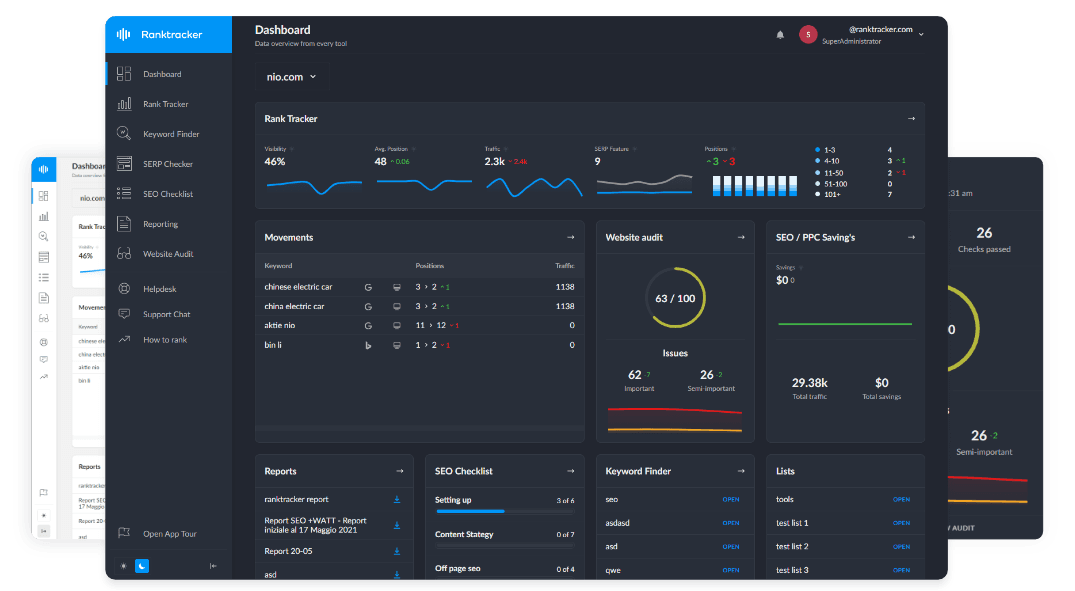Intro
In hyper-competitive markets, local SEO is no longer an option but a survival mechanism. Businesses that fail to optimize for local search risk fading into insignificance, replaced by smarter competition that leverages each algorithmic update and community connection. Below are actionable strategies designed to transform your local SEO approach, help your business rise above the noise, and secure lasting visibility.
1. Hyper-Optimize Your Google My Business Profile for Maximum Impact
Your Google MY Business (GMB) listing is the backbone of local search visibility, but completing just the fields won’t do in competitive markets. Start by reviewing your profile for completeness; ensure your business description weaves in location-specific keywords naturally, such as "family-owned Italian restaurant in [City]" or "24/7 emergency plumbing services in [Neighborhood]." Avoid generic statements like "best service," but highlight what makes you indispensable to locals.
Visual storytelling is key. Share high-resolution pictures of your team, workspace, and customer interactions. Service-area companies can share before-and-after photos of a job or short videos showing their process. Share on Google Posts every week to highlight promotions, events, or seasonal offers.
For instance, a landscaping company could share about a "Spring Lawn Prep Workshop" at a local community center, tagging the event venue. Activate the "Q&A" feature to predict common user questions like "Do you offer free estimates?" and monitor it regularly to combat user misinformation.
Leverage Google’s "Products" and "Services" tabs to segment products into granular categories. An HVAC company, for example, may list "AC Repair," "Duct Cleaning," and "Thermostat Installation" as separate services, with attribute text that incorporates localized phrases like "emergency AC repair in [City]."
2. Master On-Page SEO with Local Intent
Generic on-page search engine optimization isn’t going to cut it if you have competitors targeting the same keywords. Create location-specific targeted pages for every neighborhood or city you service, but don’t skimp on content. A ”Roofing Services in [City]" page must contain references to regional weather cycles that affect roofs, such as "protecting homes from [Region]'s hurricane seasons". Each page should contain localized content, such as references to nearby landmarks, climate considerations, or community events.
Schema markup is your silent salesperson. Use the LocalBusiness schema to provide search engines with organized information about your hours, service areas, and areas of specialization. Utilize the Organization schema as a multi-location establishment to more effectively describe your geography. Add to that the Review schema to emphasize star ratings in search snippets. Also, use the ServiceArea schema to establish your area of coverage.
Internal linking is another often-overlooked tool for driving users and search engines to your most valuable local content. Link your "[City] Plumbing Services" page to blog posts like "How to Prevent Frozen Pipes in [Region]," creating a topical cluster showing regional expertise.
3. Build Consistent and Accurate Local Citations
Citations, your directory business listings, are the basis of local trust. Beyond giants like Yelp and Yellow Pages, try niche platforms. For example, an HVAC company should list in HVAC niche directories, whereas a bakery would list on foodie boards. Always maintain consistency, as one phone number variation, such as”(555)123-4567” vs 555-123-4567”, obscures your NAP(Name, Address, Phone number) consistency, confusing search engines.
The All-in-One Platform for Effective SEO
Behind every successful business is a strong SEO campaign. But with countless optimization tools and techniques out there to choose from, it can be hard to know where to start. Well, fear no more, cause I've got just the thing to help. Presenting the Ranktracker all-in-one platform for effective SEO
We have finally opened registration to Ranktracker absolutely free!
Create a free accountOr Sign in using your credentials
Use tools like BrightLocal to automate citation audits, flagging inconsistencies across hundreds of platforms. Niche directories are key for competitive spaces. A small hotel can be listed on travel forums, whereas an HVAC SEO campaign can include HVAC directories. Monitor citations for accuracy using web crawlers that identify inconsistencies and correct them as early as possible to maintain trust.
Along with foundational directory listings, concentrate on aggregators, which act as centralized hubs broadcasting your NAP to hundreds of secondary sites. Occasionally, audit lesser-seen local directories, such as local chamber of commerce pages or niche industry portals, to uncover lost opportunities. This multi-layered approach strengthens local SEO and builds user confidence by demonstrating a cohesive digital presence across channels.
4. Dominate Local Reviews with Reputation Management
Reviews are your digital word-of-mouth marketing tool. Implement a structured review generation system: Send SMS follow-ups post-service with direct GMB review links, or embed a review widget on your website’s thank-you page. Negative reviews are inevitable but manageable. Respond publicly with solutions: “We’re improving our scheduling system to prevent delays. Please call our manager at [number] for a discount on your next visit.”
Use sentiment analysis tools to spot trends. If “slow response” arises repeatedly, address it in your GMB posts. For example, you can post “Now offering same-day appointments for [City] residents!” To deepen trust, train your team to personalize review requests. Reference specific interactions, such as a technician’s name or a project detail, making the request feel tailored rather than automated.
Pair this with a tiered response strategy where you celebrate glowing reviews by sharing them on social media with a heartfelt thank-you. At the same time, address critiques with actionable steps, like “We’ve added a second checkout lane based on your feedback.” Proactively monitor review platforms using alerts to respond within hours, signaling attentiveness to both customers and algorithms. Leverage reviews as content assets by embedding them in local landing pages and Google Posts.
5. Forge Strategic Local Link Building Partnerships
Local backlinks from authoritative sites are gold. Partner with community organizations through sponsorships, such as a cafe funding a Little League team, to earn mentions on local news sites. Collaborate with complementary businesses on co-branded guides. For example, a moving company and storage facility could create “The Ultimate [City] relocation checklist.” For service industries, guest post on local blogs with actionable content. Avoid generic directory links; prioritize editorial placements that drive referral traffic and SEO value.
Evaluate your link-building by embedding yourself in the local media ecosystem. Pitch stories to neighborhood newsletters or podcasts about your business’s impact, such as “How We’re Revitalizing [City]’s Historic District One Project at a Time.” Partner with schools or nonprofits to create resource pages like a tutoring service, developing “A Scholarship Guide for [City] Students” that earns organic backlinks from educational institutions.
To build a durable link profile, prioritize relationships with high-authority local blogs and chambers of commerce. Treat these partnerships as long-term investments. Focus less on short-term metrics and more on becoming a go-to resource for local media, schools, and influencers.
6. Craft Locally Focused Content That Solves Problems
Answer questions your competitors ignore. Use tools like AnswerThePublic to find local queries, such as “Why is my [City] water pressure low?”, and create detailed guides. For a dental practice, this could mean producing “How [City]’s Hard Water Affects Your Teeth” with citations from local water quality reports. Develop video content that resonates locally. A roofing company could film a time-lapse of a repair job during a notorious[Region] storm, embedding it in a blog post about weatherproofing.
The All-in-One Platform for Effective SEO
Behind every successful business is a strong SEO campaign. But with countless optimization tools and techniques out there to choose from, it can be hard to know where to start. Well, fear no more, cause I've got just the thing to help. Presenting the Ranktracker all-in-one platform for effective SEO
We have finally opened registration to Ranktracker absolutely free!
Create a free accountOr Sign in using your credentials
Transform static content into dynamic community resources by updating guides seasonally with hyper-local data like a landscaping company revising “Spring Yard Prep in [City]” with 2024’s frost dates from the municipal weather station. Incorporate interactive elements like ZIP code-specific cost calculator or local event calendars, positioning your site as a utility rather than a brochure.
Repurpose content across formats to maximize ROI. Take a best-selling blog post on “Top Hiking Trails in [City]” and turn it into an Instagram carousel, Google Post, and podcast episode. Use user-generated content, such as customer photos of your product in action, to drive blog and social media functionality.
7. Leverage Social Media for Hyper-Local Engagement
Social signals reinforce local relevance. Geo-tag every Instagram post to appear in location-based searches, and use hashtags like #[City]Eats or #[Neighborhood]Events. Share user-generated content and repost a customer’s photo of your product at a local landmark with a caption like “Loving this [City] sunset view from our patio furniture!”
Shift from passive posting to community storytelling by emphasizing local influencers using your product, like a [City] artist showcasing their artwork on your furniture or a chef providing recipes made using your ingredients. Host live Q&A sessions on Facebook or Instagram around hyper-local topics, like "Surviving [City]'s New Parking Laws" for a real estate firm, making your brand the go-to expert in a neighborhood.
The All-in-One Platform for Effective SEO
Behind every successful business is a strong SEO campaign. But with countless optimization tools and techniques out there to choose from, it can be hard to know where to start. Well, fear no more, cause I've got just the thing to help. Presenting the Ranktracker all-in-one platform for effective SEO
We have finally opened registration to Ranktracker absolutely free!
Create a free accountOr Sign in using your credentials
Integrate social listening tools to monitor brand mentions and join local conversations in real time. For example, if residents tweet about a road closure impacting your business, respond with a map of alternative routes and a special offer for affected customers. Use this data to tailor content that addresses audience concerns, turning followers into advocates and strengthening your local footprint.
8. Deploy Advanced Tools to Stay Ahead of Market Shifts
In fast-moving markets, real-time data is power. Use local rank tracking tools to track rankings at the street level, showing where you outrank competitors in specific ZIP codes. For example, if [Neighborhood] visitors abandon your booking page, test CTAs like “Same-Day Service for [Neighborhood] Residents!”
For GMB, track which post types(events vs. offers) drive the most clicks using Google’s built-in insights. In winter, a snow removal company might pivot GMB posts to highlight “24/7 Storm Response,” while a pool service shifts to “Spring Opening Specials” as temperatures rise.
Integrate predictive analytics tools to forecast ranking fluctuations based on algorithm updates or seasonal trends, allowing preemptive strategy tweaks. For instance, a heating company might anticipate a winter surge in “emergency HVAC repair” searches by analyzing historical heatmaps and pre-optimizing content.
Combine SEMrush or Ahrefs data with CRM insights to identify high-converting keywords tied to specific demographics, such as “senior-friendly plumbing services[City].” Automate reporting with dashboards that aggregate performance metrics across tools, enabling quick adjustments. For example, if Google Analytics shows a spike in mobile traffic from [city] but low conversions, audit load times, or mobile UX for that audience.
Endnote
Winning locally requires equal parts technical rigor and community intuition. Audit your strategy quarterly, engage authentically with local audiences, and adapt to algorithm shifts better competitors catch on. By embedding local relevance into every digital interaction, from your Google My Business profile to your customer service ethos, your business won’t just rank higher; it will become a household name.

